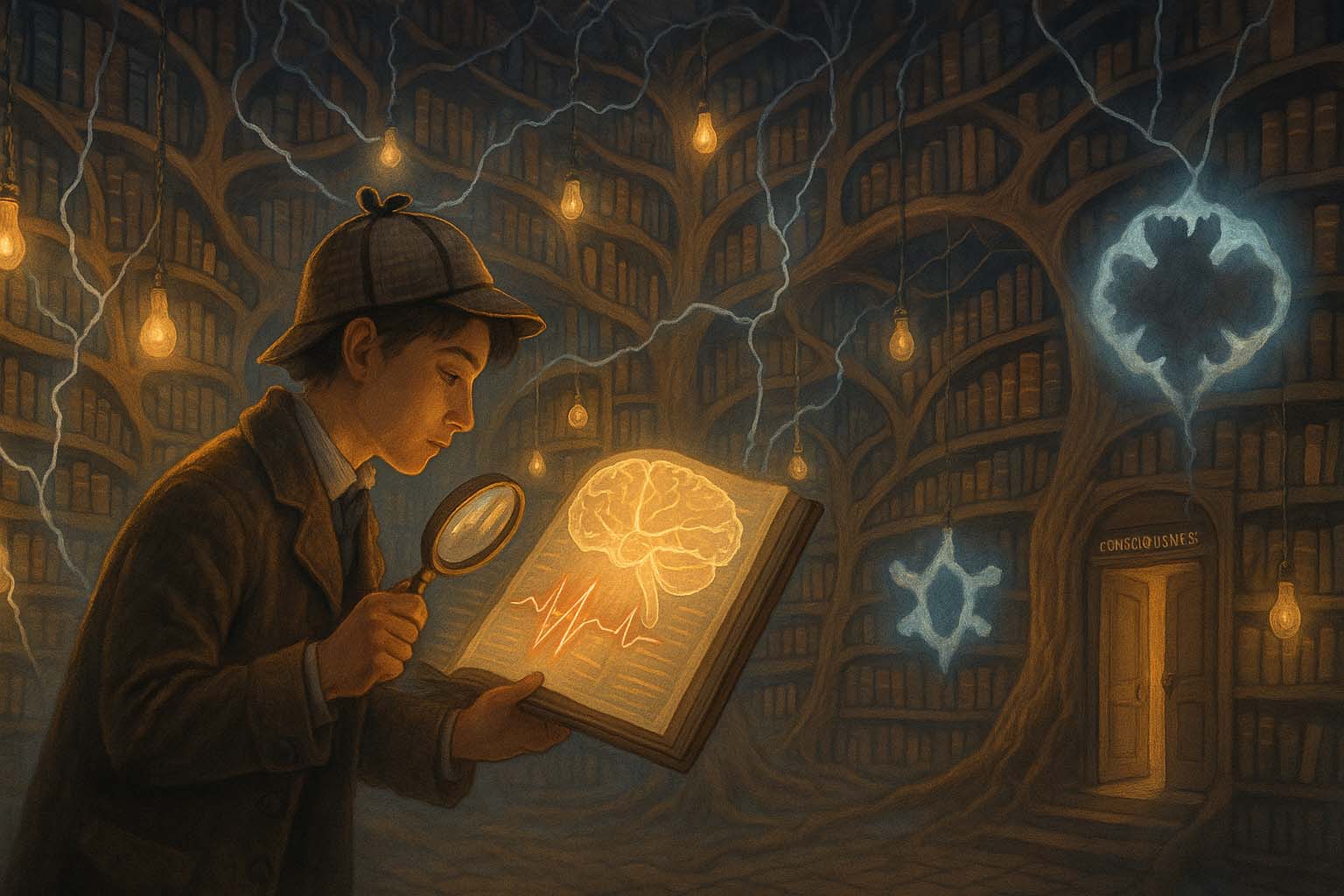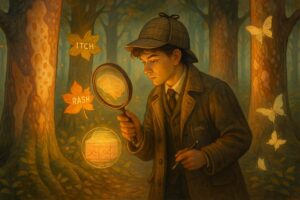
Neurology
- Posted by admin
- Categories Organ & Systems Medicine
- Date May 23, 2025
- Comments 0 comment
The Mind-Map Detective’s Domain – Cracking the Cases of Signals, Synapses, and Silent Seizures
1. Introduction: The Scene of the Specialty
Step into the shoes of a Neurology sleuth.
Here, the mysteries are electrical, the maps are cortical, and the clues often hide in subtle signs. Neurologists investigate the command centre of the human body—the brain, spinal cord, and peripheral nerves—where a lesion the size of a lentil can rewrite a life. These detectives follow dropped reflexes, wandering words, tremors, twitches, and sudden silences. Welcome to a world where a shadow on an MRI can explain a year of falling, and where every neurological exam is a riddle with layers.
2. Key Mysteries They Solve (Common Conditions)
These detectives specialise in solving cases involving:
- Epilepsy & Seizure Disorders – where time fractures and memory falters.
- Stroke & TIA – acute episodes of lost speech, strength, or sense.
- Parkinson’s & Movement Disorders – rhythmic mysteries of motion and rigidity.
- Multiple Sclerosis & Demyelinating Disease – chronic puzzles with shifting symptoms and flares.
Each clue—whether a gaze deviation or a dragging foot—must be placed on the mental map of the nervous system.
3. Their Trusted Tools & Techniques
Every detective has their kit—and in Neurology, tools may include:
- The Neurological Exam – a hands-on logic puzzle of tone, power, reflex, and coordination.
- MRI & CT Scans – structural storyboards of brain and spine.
- EEG (Electroencephalography) – tracing electrical whispers in seizures or encephalopathy.
- Lumbar Puncture & Nerve Conduction Studies – extracting and analysing neural signatures.
The neurologist works like a cartographer of function—mapping deficit to diagnosis.
4. The Charms of This Field: Why It Captivates the Curious
- Cerebral Sleuthing: Localisation before lab work—what, where, and then why.
- Subtlety and Precision: Small findings yield big answers.
- Mind-Body Integration: Psychology, movement, speech, and cognition collide.
- Philosophical Depth: Exploring identity, memory, consciousness, and control.
This is medicine as metaphysics, where biology meets the soul.
5. Challenges: The Toughest Cases They Face
- Uncertainty and Ambiguity – Not every scan shows the answer.
- Chronicity – Many neurological diseases have no cure, only management.
- Functional Neurological Disorders – Where mind and mechanism diverge.
- Emotional Weight – Diagnoses like MND or Huntington’s carry deep human sorrow.
But the seasoned neurologist knows: sometimes the most healing act is helping someone understand their decline.
6. Famous Cases and Hallmark Clues
- The “Classic Presentation” – Right-sided weakness and expressive aphasia: a left MCA stroke.
- The “Zebra” – Young woman with optic neuritis and bilateral leg numbness: demyelination.
- The “Aha Moment” – A tremor that disappears with distraction: not Parkinson’s, but psychogenic.
7. Your Training Trail: How to Join the Investigation
To become a Neurology detective:
- Sharpen your general medicine skills—many neurological presentations begin there.
- Practise the neuro exam until it becomes a reflex of insight.
- Train your pattern recognition with case repetition and detailed localisation.
- Embrace complexity: learn anatomy, radiology, and patient storytelling in equal measure.
Whether decoding a collapsing gait or a sudden speech lapse, you’ll learn to trace symptoms back to their cortical source.
8. Final Words: The Signature of the Neurology Detective
Neurology detectives chase electricity, unravel memory, and give voice to silence.
They interpret the signals of our most intricate organ, often when it’s struggling to speak for itself.
They don’t just ask what’s wrong—they ask where, how, and why now?
So if you’re drawn to the deep questions of function and identity—
then this is your cerebral casebook to carry.



